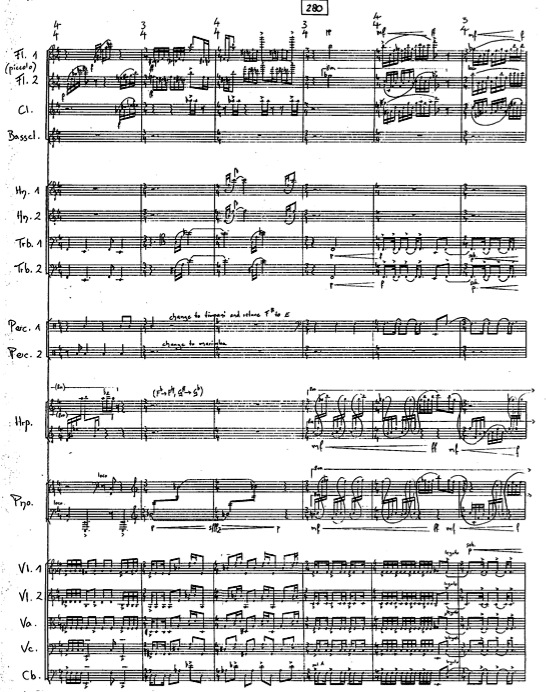SimyacI (The Alchemist) (1997-1998) 18’
I. Salt - II. Sulphur - III. Mercury
2fl, cl, bcl, 2hrn, 2trbn, 2perc, pno, hrp, strgs: 8 8 7 6 4
first performance: Nederlands Balletorkest, Christopher Lyndon-Gee, cond., Beurs van Berlage, Amsterdam (Project Jonge Componisten 2000)
score published by: MGN / Donemus, Amsterdam
Winner Matthijs Vermeulen Aanmoedigingsprijs 2002, The Netherlands
Nominee NOG Jonge Componistenprijs 2000, The Netherlands
“Listening to SimyacI , one notices immediately the crystal clear acoustic imagination of the composer. With conviction and craft he translates it into colourful and effective orchestration, in which each orchestral group shows itself well. The buildup of tension in each of the three movements shows a good sense of proportion. The piece seems to have been constructed according to organic laws rather than architechtonic ones, which produces a natural, “living” piece of music. (...) The jury hopes and expects that Maier shall develop his practices
of acoustic alchemy further and trusts him to be led onwards by his intuitive musicality.”
(-from the jury report NOG Jonge Componistenprijs 2002)
The three movements of this piece are based on the three basic substances of alchemy - Salt, Sulphur, and Mercury, and on the characters of their corresponding elements - water, fire and air.
The first movement captures the slow, passive and receptive energy of Salt / water.
A still surface at first, it slowly initiates a dynamic, wave-like process. When this force culminates in a flood, Mercury, the second movement, erupts abruptly according to its firy and capricious nature, while thematic material from the first movement is being developped further. Structurally and thematically, this movement is a symmetrical mosaique (it being the central movement) with a coda depicting the catharsis of fire, an all-consuming blaze.
The last movement, Mercury, is the product of the previous antithesis of fire and water and contains elements of both. The “windstill” beginning bears a reference to the first movement, before the music gradually develops into wind, and finally, in the insectoid climax of the piece, a storm.
An accelerando runs throughout the entire piece, until, at the end, extremely low and extremely fast notes touch and become each other.
All the music of this piece is derived from three chords (one per movement), which are used in analogy to chemical elements as basic bulding blocks of complex structures, in constant permutation and countless combinations, while being the same all the time, much like an object which is turning and showing different aspects in different lights to the viewer.
A visionary reference to the legendary Persian alchemist Ostanes served as a further source of inspiration in the writing of this piece.
listen: Simyaci Clip!

